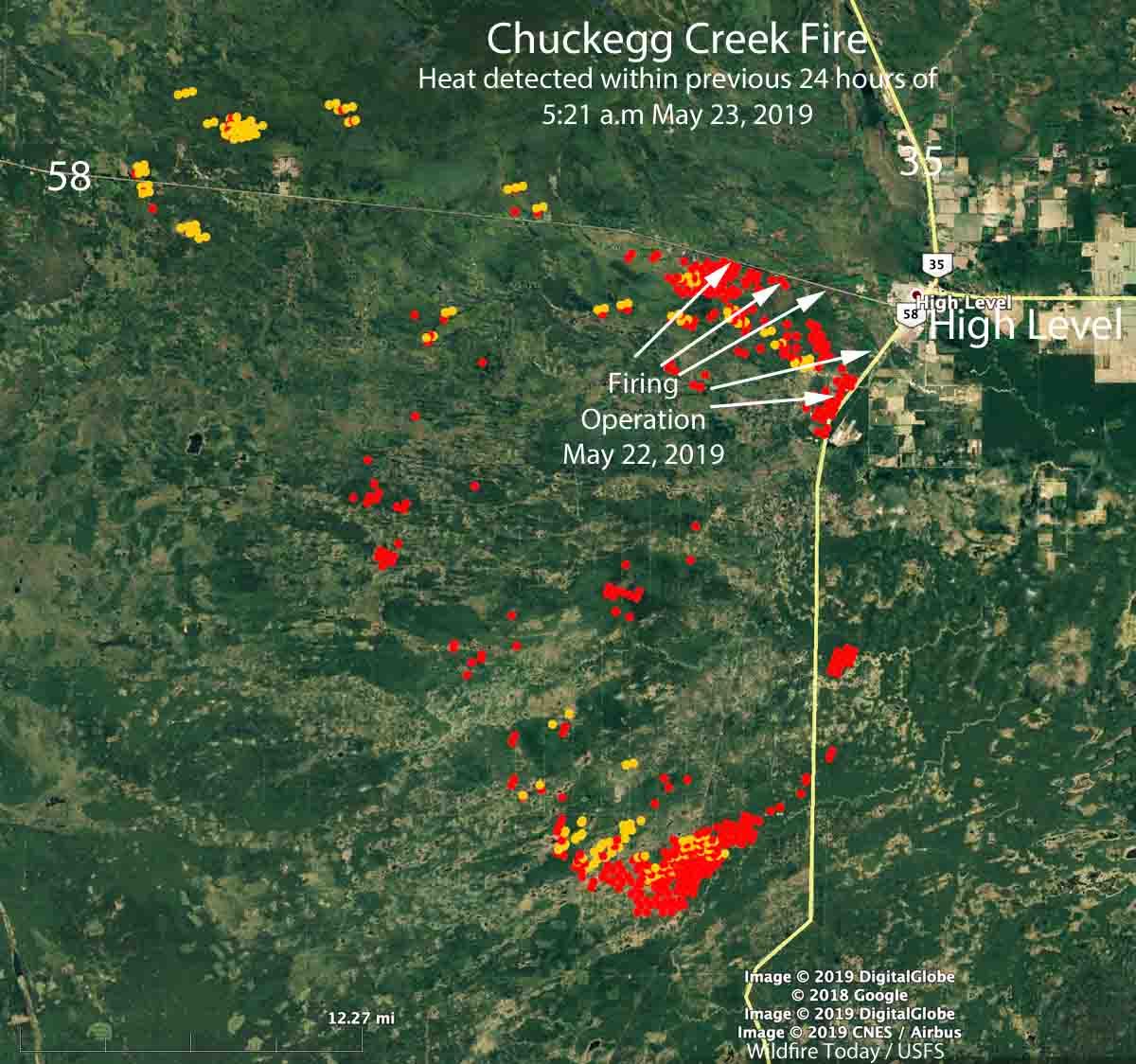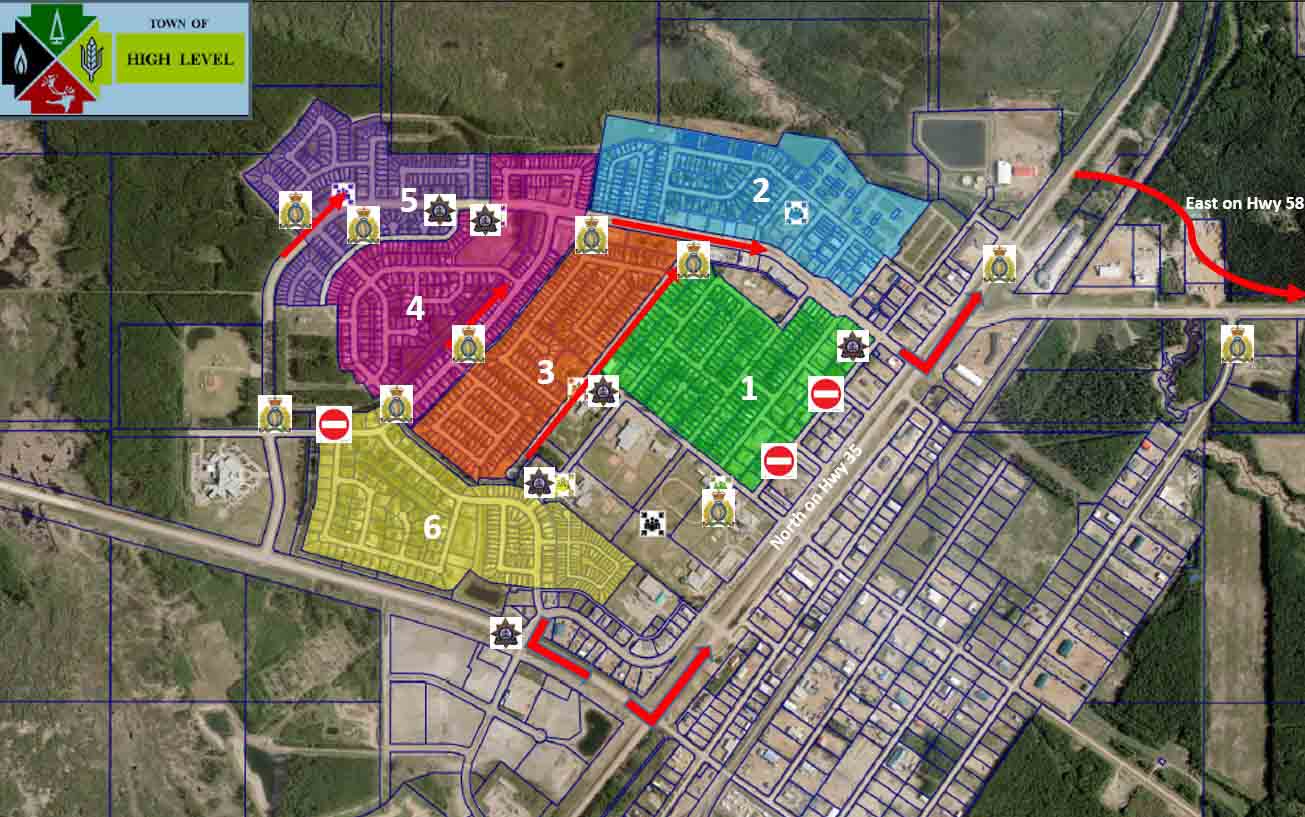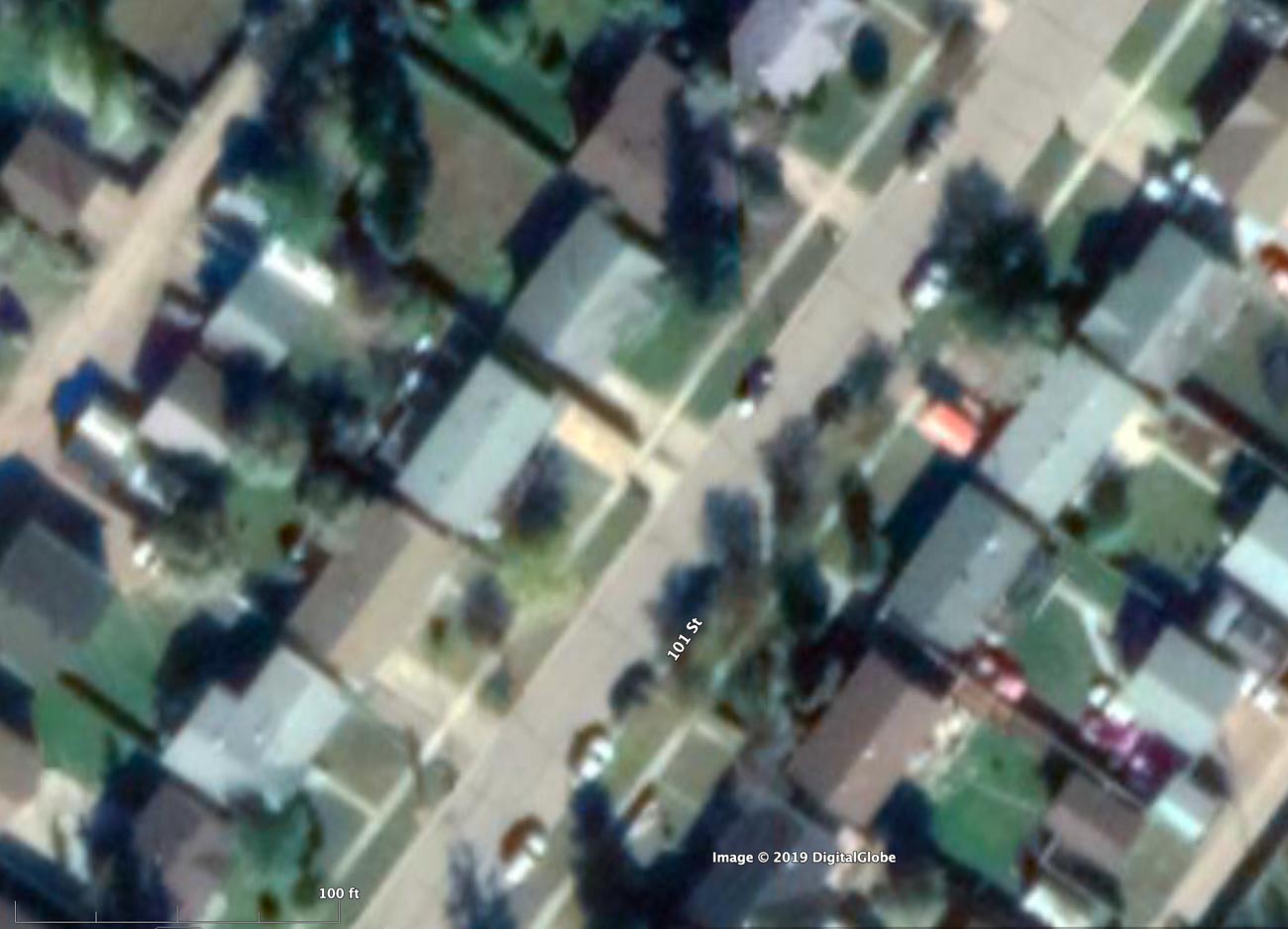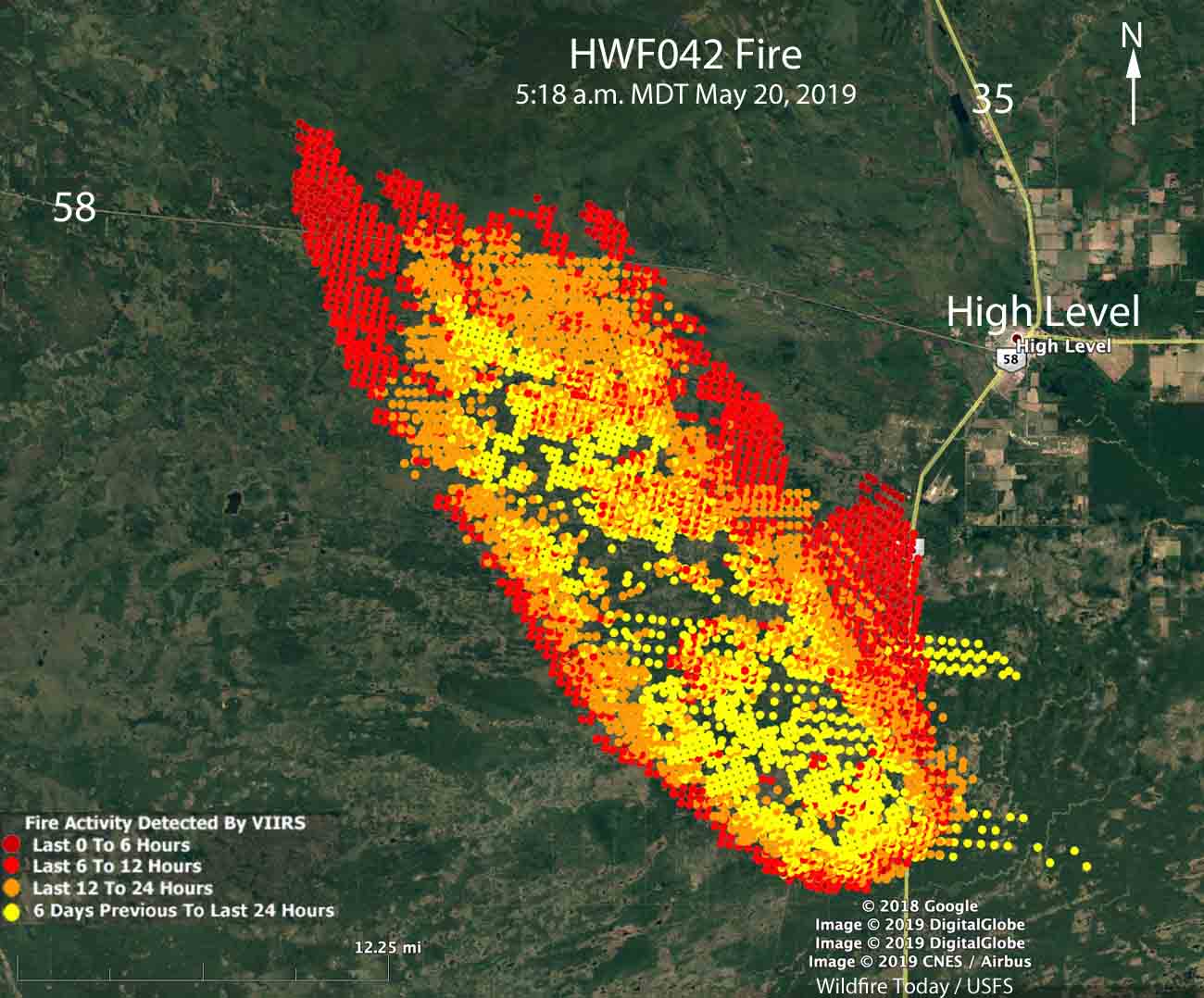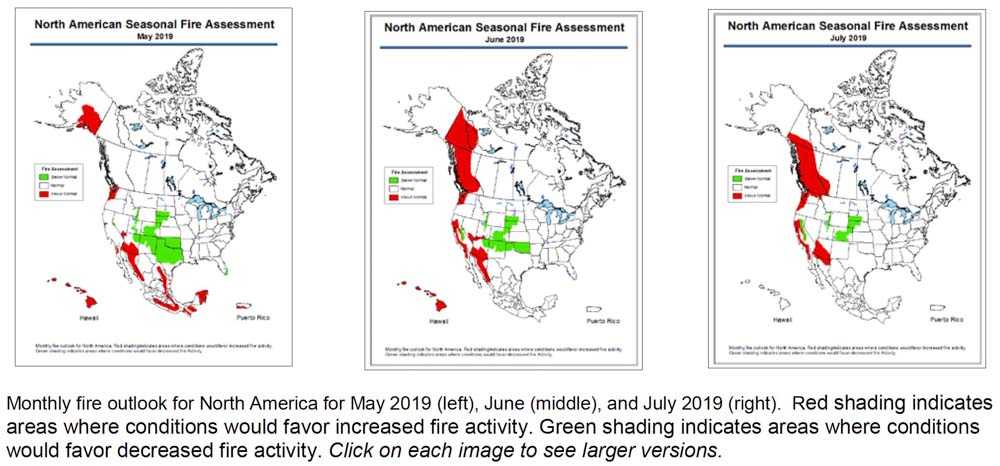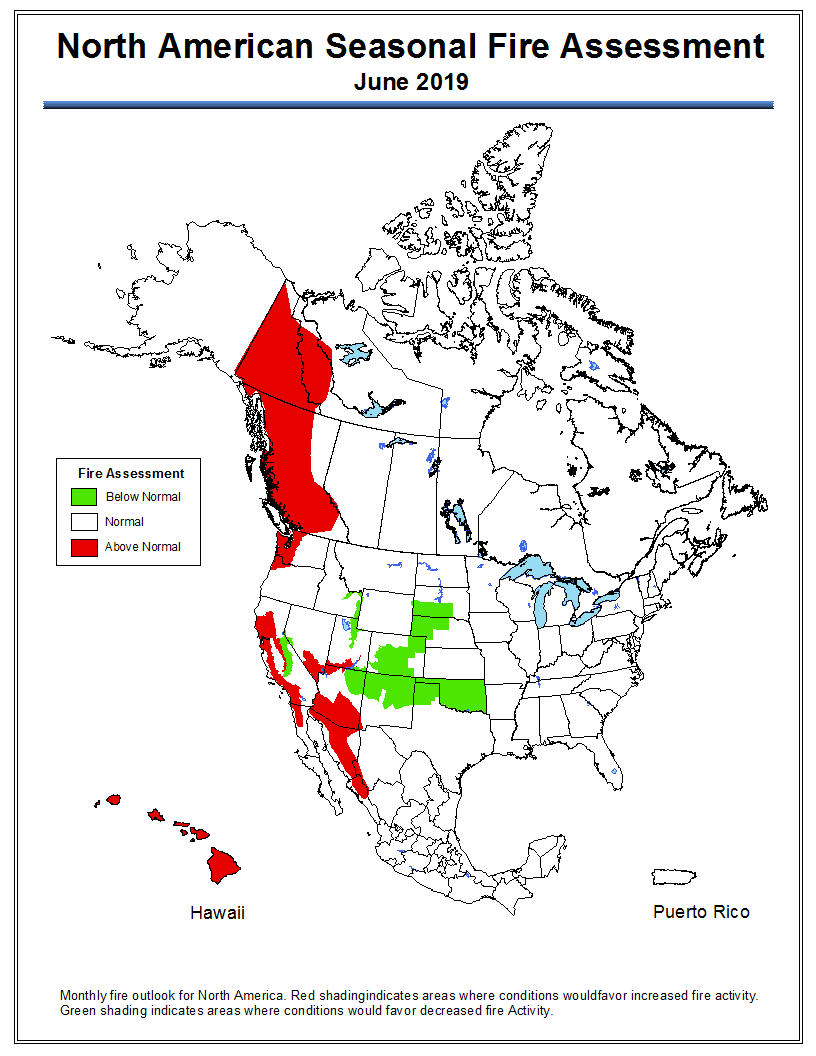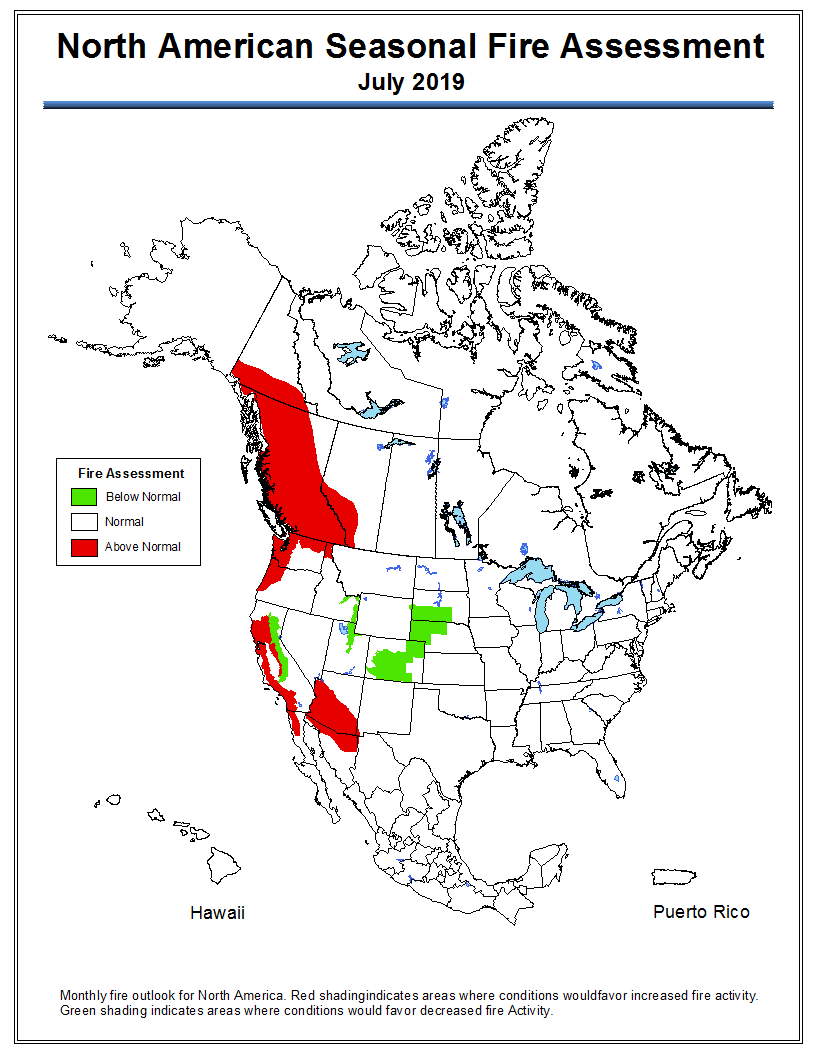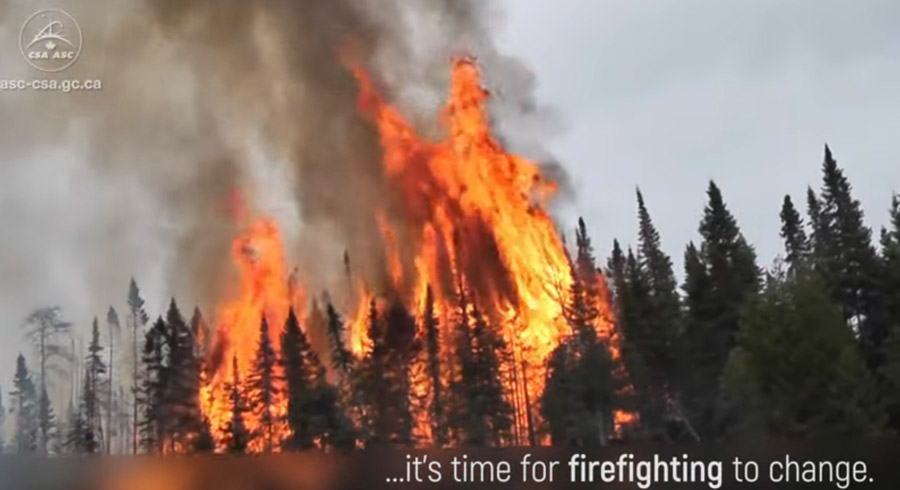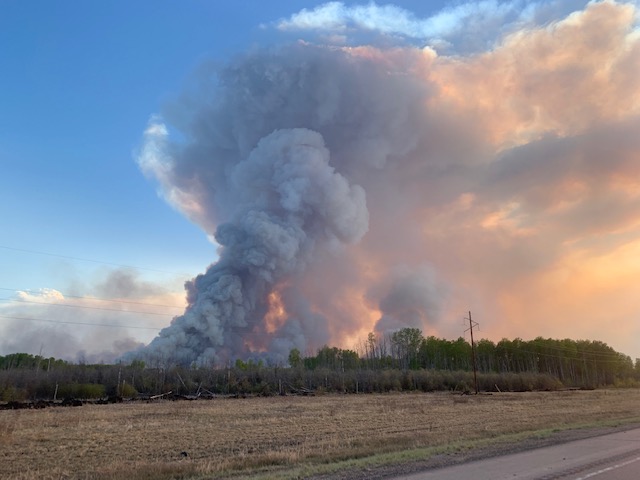
Firefighters battling the Chuckegg Creek Fire in Northern Alberta, Canada took advantage of a wind coming out of the northeast Wednesday to conduct a burnout or firing operation along Highways 58 and 35 to help protect the town of High Level. The goal is to eliminate fuel by burning to make it more difficult for the fire to make a run into the town if pushed by a southwest or west wind.
(To see all of the articles on Wildfire Today about the Chuckegg Creek Fire, including the most recent, click here.)
Below is more information from Alberta Wildfire:
- Due to northeast winds and resources the fire has not reached the Town of High Level. The main area of spread remains away from town.
- The High Level Fire Department and other municipal firefighters have completed structure protection on the southwest side of town and is being established on the northwest side of the town. In addition, structural protection has been established on Mackenzie County homes southeast of High Level, Tolko and Norbord.
- Structural firefighters have also been taking preventive measures on homes. This includes removing debris from yards, removing patio furniture from decks and other flammable material.
- [Wednesday] afternoon, firefighters conducted a successful controlled burn operation to create containment along highway 35 south of High Level, and west along highway 58. Further ignition operations will be utilized when conditions allow.
- Alberta Wildfire firefighters along with air support from helicopters and air tankers continue to focus containment efforts south of High Level, and with current conditions firefighters continue to be effective, due to lighter winds out of the northeast. This in result continued to aided crews on protecting power line poles west and south of the Town of High Level.
- The last recorded size is approximately 92,000 hectares. [227,000 acres]
- Heavy equipment has been working along the northeast side of the fire and continue to make progress on consolidating a guard around the fire perimeter.
- There are 110 structural firefighters that continue to establish and maintain structural protection on homes in the Town of High Level and on other critical values at risk within Mackenzie County. Alberta Wildfire has 76, firefighters along with 24 helicopters on this fire. There are more resources arriving daily.
The weather forecast for High Level, Canada predicts winds out of the northeast or north-northeast through Saturday, which should make it possible for firefighters to continue the burnout or construct firelines on the east and northeast sides of the fire. Sunday will bring warm temperatures and winds out of the southwest to southeast which could challenge the 76 wildland firefighters assigned to the blaze.
